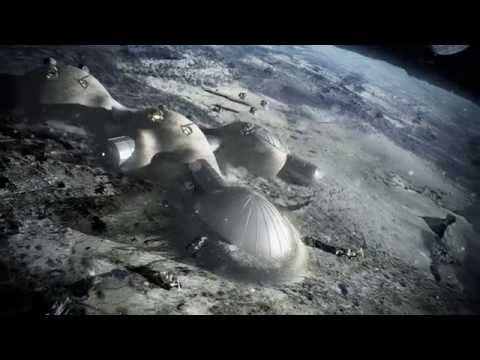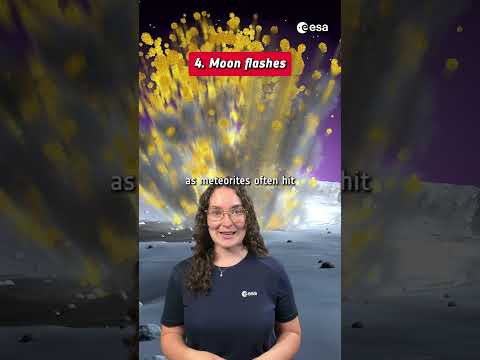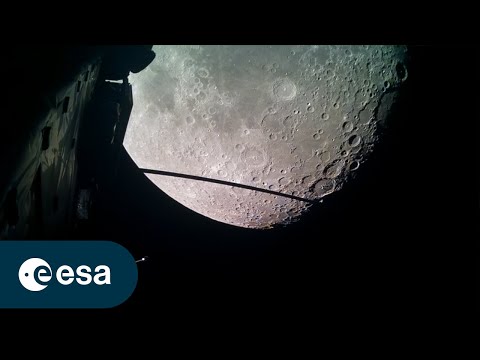Would you farm on the Moon?  #shorts
#shorts
The ‘Enabling Lunar In-Situ Agriculture by Producing Fertilizer from Beneficiated Regolith’ project, involves studying a combination of mechanical, chemical and biological processes to extract mineral nutrients from the lunar soil. Valuable elements might need concentrating before use, while undesirable ones would be removed.
The current study represents a proof of principle using available lunar regolith simulants, opening the way to more detailed research in future.
★ Subscribe: http://bit.ly/ESAsubscribe and click twice on the bell button to receive our notifications.
Check out our full video catalog: http://bit.ly/SpaceInVideos
Follow us on Twitter: http://bit.ly/ESAonTwitter
On Facebook: http://bit.ly/ESAonFacebook
On Instagram: http://bit.ly/ESAonInstagram
On LinkedIn: https://bit.ly/ESAonLinkedIn
On Pinterest: https://bit.ly/ESAonPinterest
On Flickr: http://bit.ly/ESAonFlickr
We are Europe’s gateway to space. Our mission is to shape the development of Europe’s space capability and ensure that investment in space continues to deliver benefits to the citizens of Europe and the world. Check out https://www.esa.int/ to get up to speed on everything space related.
Copyright information about our videos is available here: https://www.esa.int/ESA_Multimedia/Terms_and_Conditions
#ESA
#Moon
#Farming




 #shorts
#shorts
With the selenian gravity, plants will grow taller than on earth! Let's grow 500 feets sequoïa! …
BEANS!
"hydroponic farming could be the *solution*" – good one! Could the problem with lunar regolith be solved by adding organic material (compost?) or is it just the 'wrong kind of aggregate'? If the latter, could some other regolith-processing activity produce the right kind?
This use of the word “farming” implies a scale comparable to fields of farm land. But all plant growing on the moon would have to be inside under lights. The lunar day/night cycle is about a month. Plants do not like two weeks of night.
I would farm for people on the Moon for free! Sign me up please!
You can use a nutrient rich gas instead of water on the roots, it would be far less effort to get and much lighter
Not going to happen. A meal would cost a thousand dollars. 500 people, 500 thousand dollars for breakfast.
Let's not forget that where there are plants, there is photosynthesis and, thus, the CO2 is converted to oxigen without the need of an air purifying system (plus, the carbon atom becomes part of the plant itself, enabling it to grow).
Exciting stuff. I think a priority in all of this needs to be how generate power on the moon. This will ultimately be the limit of research capabilities. Sending a few specialized remote-controlled drvices will make more economic sense in utilizing payload capacities than sending up building mats, including solar panels, which the moons soil seems suitable for making.
Even before that, however, the best usage of payloads to the moon will be specialized surveying equipment – namely drilling drones. The deeper a bot can dig without getting gunked up/breaking, the better.
Different types of drilling may be necessary; drilling for acoustic purposes in combination with other bots can be used to survey large volumes of terrain between bots, snd the potential for useful resources, using established techniques used on Earth for the same purpose. Other specialized drill drones would be able to relay data of specific areas of terrain drilled into to a central command for analysis. If the bot can self analyze, it would be greatly improve efficiency, but that comes at more expense to research/dev in automating sample analysis and potentially added payload weight to foster the tech.
Drilling/Surveying bots that can locate resources that contribute to generating power and creating more lunar ecosystems.
Before any other work is done on the Moon, this will prove to be the most important sector. Then humans assisted with mini systems to seed other larger systems than can be reproduced on the moon.
Even if we can fabricate everything in the future, we must always leave room for mother nature to follow us into the stars. For me it's even psicological, not just food.
why the hell would humans colonize themself to the moon when they already done so much damage to beautiful earth?